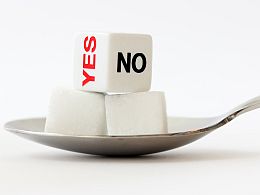5 Tips for Overcoming Sugar Cravings
 The behavior of constantly craving sugar is commonly connoted as a good example of addictive behavior. A sugar addict exhibits suspicious behavior such as avoiding sugar and then binging on it later. A sugar addict might even break into a state of nervousness or cold sweat in the absence of a regular ‘sugar fix.’ Overcoming sugar cravings is difficult for a sugar addict.
The behavior of constantly craving sugar is commonly connoted as a good example of addictive behavior. A sugar addict exhibits suspicious behavior such as avoiding sugar and then binging on it later. A sugar addict might even break into a state of nervousness or cold sweat in the absence of a regular ‘sugar fix.’ Overcoming sugar cravings is difficult for a sugar addict.
Natural sugars are found in fruits (fructose) and milk (lactose). However, majority of sugar craving problems come from ‘added sugars’ which are sugars added to foods during processing, preparation, and/or at the table. Too much added sugar in-take is unhealthy because they mostly supply empty calories and not nutrients, unlike natural sugars. The top nine sources of excess sugars in the US are carbonated soft drinks, fruit drinks, candy, cakes, ice-cream/ice-milk, ready-to-eat cereal/brans, sugar/honey, cookies/brownies/granola bars, and syrups/toppings.¹ It should be mentioned that sugar is not only present in sweets but also in starch. According to the USDA dietary guidelines, each person’s recommended in-take of sugar should be based on an individual energy input and energy output calculation.
5 tips for overcoming sugar cravings
- Cut out one sugar craving from your diet each week: Slowly cutting out sugar as opposed to going cold turkey can help your taste buds develop an affinity for less sugary foods. Instead of eliminating all foods containing added sugars, do it slowly week by week. You can keep a diary to help you track the sugars you are letting go of. For example in one week you can practice not taking a serving of dessert after dinner. In no time you will easily be taking a pass on cakes and ice-cream and be well on your way to being an expert in overcoming sugar cravings.
- Stock your kitchen shelves with healthier snacks: Most people forget that fruits and vegetables can serve as snacks too. When you go grocery shopping, buy ready-to-eat fruits and vegetables for snack time. You don’t have to cut out sweetness, you can buy fruits and vegetables that are known to be naturally sweet such as bananas, berries, apples, and carrots. Also buy low-fat snacks which have less sugar and starch content than high-fat snacks.
- Eat Protein to Curb Hunger: Proteins are filling so instead of grabbing high-sugar foods when hungry, you can grab a protein bar, beans, eggs, fish, lean chicken, low-fat yogurt, and nuts instead. Be highly selective about your choice of protein bars as some of them also contain added sugars.
- Eliminate sugar drinks: Carbonated soft drinks are the number 1 source of excess sugar in-take take in the United States. You can replace soft drinks and fruit drinks with water. If you want to transition slowly, add a slice of lemon in your water, or add a drop of natural Stevia flavoring (a natural product obtained from the Stevia Rebaudiana Bertoni plant). Stevia flavorings have no calories and are sweeter than sugar.
- Use fruits as Sweeteners: Instead of using sugary sweeteners, try substituting them with fruits. Being creative with fruits as sweeteners will slowly help to retrain your test buds. Also, in recipes that call for addition of sugar, replace sugar with a blend of sweet fruits as well.
References:
1. Krebs-Smith S. M. The Dietary Guidelines: Surveillance Issues and Research Needs. The Journal of Nutrition [Internet]. 2001 Feb 1. 131(2):5275-5355. Available from: http://jn.nutrition.org/content/131/2/527S.full.pdf+html
-
Advertisement

 Facebook
Facebook  Twitter
Twitter  RSS
RSS







